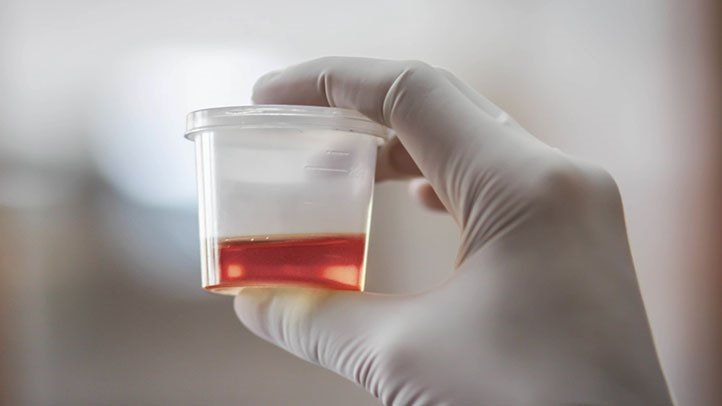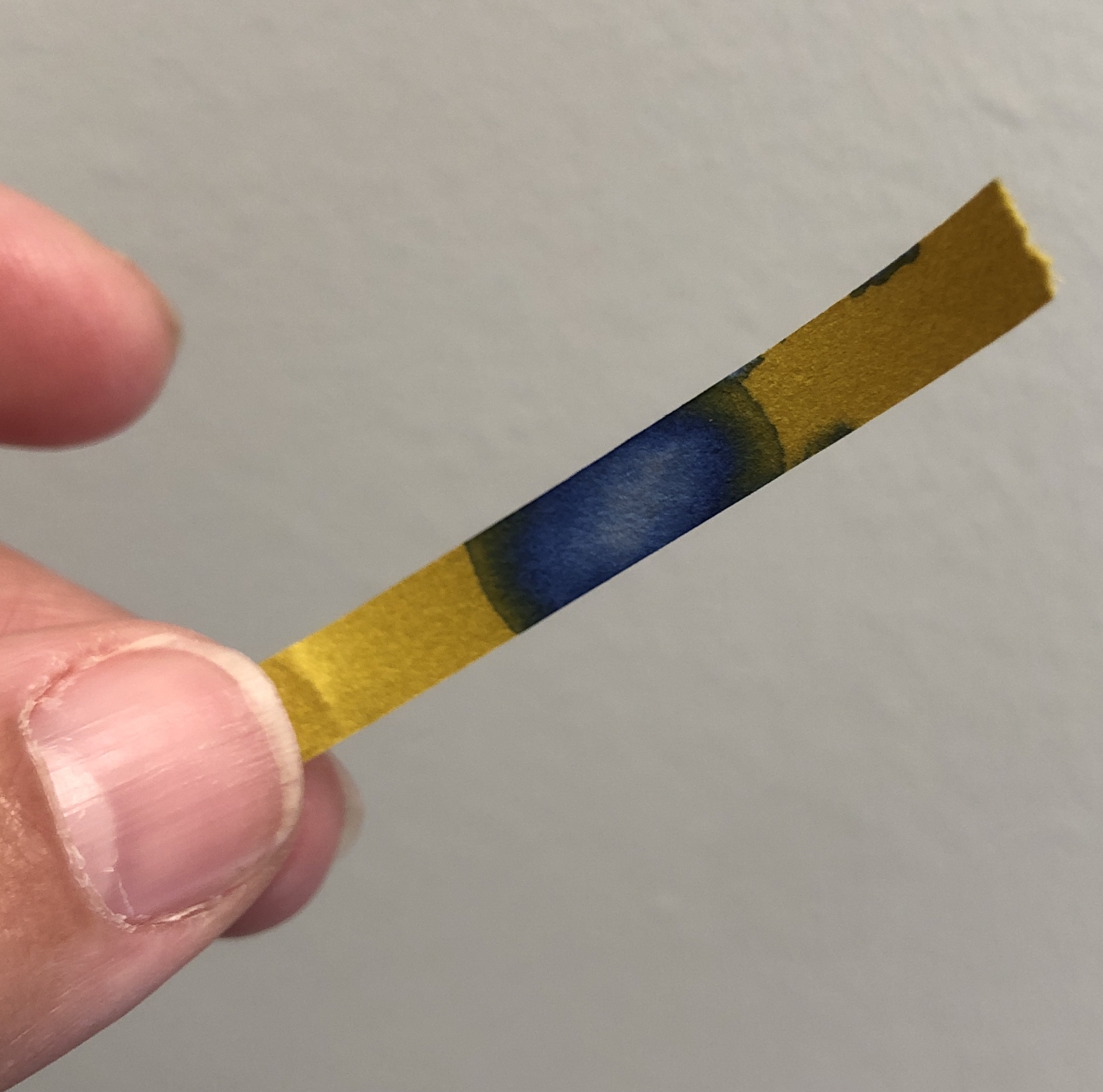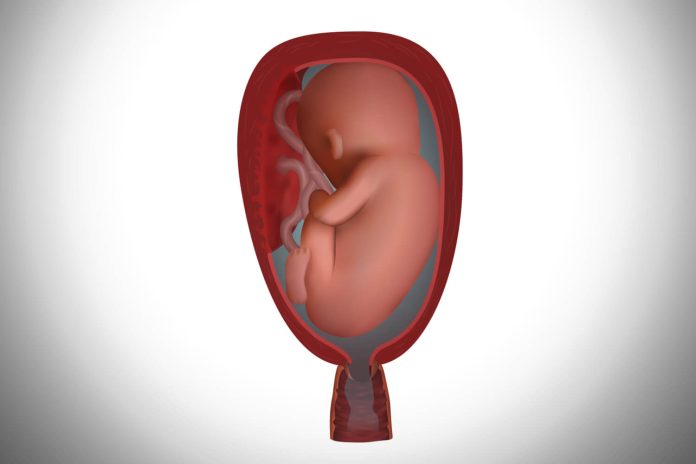When it comes to the growth of the baby while they are still within the mother’s body, amniotic fluid plays a critical role. The baby is safe from many dangers, including body heat loss and direct contact with harmful substances. Maintaining the right amniotic fluid level is, therefore, essential. One of the most significant causes of anxiety when pregnant is the possibility of amniotic fluid leaking. Every pregnant woman wants to know how to test amniotic fluid leak at home.
The amniotic fluid provides a cushion for the developing fetus. Leaking amniotic liquid may indicate that your due date is getting closer. However, depending on the context, it might potentially indicate something further. Pregnancy leaks can seem to be normal. It is not a warning sign. However, the possibility of amniotic water leaks during pregnancy is cause for concern. If you are concerned about the same thing, read this article to discover how to test amniotic fluid leak at home with ease and comfort.
Table of Contents
Why is it vital to know how to test amniotic fluid leak at home?

The embryo in the womb lives in an environment predominantly characterized by the presence of a fluid that is yellowish. Amniotic fluid is the common name for this substance. Amniotic fluid leaking is a common pregnancy symptom for some mothers-to-be. A significant amount of this leakage is a cause for concern. Immediately put in touch with a medical professional. The fetus produces its vitamins, hormones, waste, and antibody-producing cells. They are present in this fluid.
The main function of this amniotic fluid is to make room for the fetus as it grows and moves around in the uterus. It protects the body even further against injuries and illnesses. Thus, encouraging the development of the fetus’s internal organs. Additionally, the baby’s umbilical cord is shielded from any potential for compression. Excessive leaking is not good for the unborn child’s safety. Therefore, mothers-to-be must learn how to test amniotic fluid leak at home.
How to test amniotic fluid leak at home: steps to guide
Is your pregnancy causing you any anxiety? Is there a sensation of fluid escaping from your body? Have no fear. Amniotic fluid might escape your body in minute amounts at times. It is typical. However, the mother’s and child’s health is in jeopardy if the fluid seeps out at an unsafe rate. Amniotic fluid loss during pregnancy is a leading cause of complications and malformations. When you’re expecting a baby, you need to exercise extreme caution. The following are some pointers on how to test amniotic fluid leak at home.
Check the wetness in the vagina

There is a possibility that only a negligible amount of fluid will emerge from the vaginal opening. Yet, you might feel the seeping of the liquid. When resting for a while, the vaginal tract can become wet due to fluid leakage. You’ll probably feel this either in your genitalia or the space around your genitalia and the anus.
Even though you might not spout, you will probably feel water coming out. Some studies show that your vagina gets wet and experiences some discharge while you sleep. Most of the time, you’ll feel this in your genital area or between your genital area and your butt. Your clothing may get wet as a result. You will probably feel a wetness in your pants. If there is only a little fluid, it is most likely uterine discharge or pee. But wait, that might be amniotic fluid, too. Several factors determine how much fluid will rush out of your body when the membrane bursts.
-
The amount of amniotic fluid present at conception
-
The location of the sac’s tear
-
Check to see if your infant’s head is sufficiently low inside the pelvic region as a connection.
Collect the leaking fluid cloth or toilet paper

It is typical to be frightened if slime or urine discharge begins to leak out from the vagina while the mother-to-be is at home. It is when it becomes essential to understand how to test amniotic fluid leak at home. Collecting the leaking fluid is an easy process. It is to determine whether or not there has been a loss of amniotic fluid. It would be helpful if you could get a cotton swab or a clean napkin. Gently touching the vagina to start a flow is necessary.
Take note of the color of your leaked fluid

The color of leaked amniotic fluid can range from clear to a yellowish tinge. Although this usually is the case, the water spills swiftly. You may be experiencing some vaginal wetness. Flow rate monitoring is essential. If the discharge is minor, it is safe to ignore it. However, you should visit a doctor if the bleeding is excessive. Greener-than-normal leaking amniotic fluid may indicate a medical condition. It also becomes a serious concern when it has an unpleasant odor. Meconium might also be present in the discharged liquid.
The infant’s gastrointestinal tract contains this item. Meconium that is browner requires urgent medical attention. Keep an eye out for some slime on the cervix. The sticky fluid or mucus Is forced into the uterine entrance during gestation to prevent the entry of germs and other small creatures. The body will typically push the baby out when you’re in the final days of pregnancy. It has a likelihood to be both pink and transparent.
Check the odor of the leaked fluid

It is one of the most weird yet effective steps when you are learning how to test amniotic fluid leak at home. All you need to do is rely on the power of your sense of smell. Pregnant women must be vigilant and conscious about how the leaking fluid is smelling. Your efforts can protect the life of your unborn baby inside your womb. Check for leaks of urination or amniocentesis fluid. Sniff the leakage with your nose by placing it closer to a tissue, linen, or underpants. A urine odor rules out the leakage in the fetal sac.
The growing fetus presses down on the urinary tract, causing discomfort throughout the pregnancy. A small amount of pee may get out whenever you breathe deeply when pregnant. The fluid from the amniotic sac is the warm fluid that surrounds a fetus during pregnancy. The vaginal discharge may be sluggish and steady. It will typically be odorless and transparent. On occasion, though, a bloody or otherwise unpleasant odor may be present.
Examine your vaginal area when you have had sexual activity

Let’s say your previous sexual encounter didn’t involve a contraceptive. The fluid may be male sperm and genital fluid. One-time occurrences of little amounts of liquid are unlikely to be amniotic fluid. The onset of discharge from your vagina might all be the result of greater arousal. When the female organs receive more blood, the vaginal glands may produce a clear, watery discharge. To put it simply, it provides lubrication for when you’re having private moments. The leakage of watery fluid may increase at the beginning, middle, or end of sexual activity. Typically, the color of vaginal secretions is either whitish or yellowish.
Bleeding during urination

Blood may be present in a ruptured water bag if it occurs during the initial stages of pregnancy. However, the discharge from the vagina may be the only symptom of pregnancy that worsens. Amniotic fluid leakage and irregular vaginal bleeding are both medical emergencies that require prompt medical attention.
Use the amniotic fluid testing kit

Home tests, like the one for amniotic fluid leakage, have become more accessible as a result of developments in medical innovation. Amniotic fluid may be detected in uterine discharge with this easy-to-use test. Amniotic fluid leakage may be detected with a simple test using specially prepared testing strips or swabs.
-
After you have opened the test kit, take out one of the test strips or pads.
-
To take an amniotic fluid test, tuck the patch or pad inside your underpants or hold it beneath your vaginal area.
-
Maintain the position of the testing material for the amount of time that is specified in the manual.
-
When the timer goes off, take the thing out and look at the result.
-
Strips or pads are used to detect amniotic fluid by comparing their color to a reference chart.
It’s important to read and adhere to the directions in your test kit since different manufacturers may have somewhat different procedures. Now you know how to test amniotic fluid at home using the kit. You might not need to see a doctor.
When to Seek Medical Attention for Amniotic Fluid Leak?

If the fluid appears greenish or rusty yellow, you should contact a healthcare provider or visit the emergency room right away. The presence of this symptom may mean that your unborn child has passed a stool leak. In some cases, this might lead to birth asphyxia (breathing issues). The baby will be able to float comfortably and safely in amniotic fluid, which also aids in maintaining body heat. If the amniotic sac is broken, fluid will begin to seep out of the body via the female reproductive tract.
If you believe uterine walls have broken, you might be required to see medical professionals or travel to the emergency room. Remember to observe the fluid’s coloration and report it to the healthcare provider. An expecting mother’s state of health is more vulnerable. Checking and treating fluid loss promptly is crucial for maternal and infant health.
Why does amniotic fluid leak?

Amniotic fluid leaking has a variety of possible reasons. But this might happen because of genital infectious diseases. As a result, it is advised that women who have symptoms like genital discomfort, redness, or burning while urinating see an obstetrician. Hence, the conceiving mother must learn how to test amniotic fluid leaks at home. Several other factors might cause the amniotic fluid to leak.
-
Amniotic fluid starts to flow out of the sac once it has partially ruptured. It often heals itself with bed rest and consuming plenty of fluids in the later stages of pregnancy.
-
Amniotic fluid decreases because of placental issues; the fetus can have trouble getting adequate nutrition and blood since the mother is not passing as much urine.
-
Some drugs, including those used to treat hypertension, premature labor, and pain, may reduce urine production and, by extension, amniotic fluid levels in the fetus. This is why it’s important to check with your doctor before consuming any medicine during pregnancy.
-
Birth defects: Around week 8, the infant begins to ingest amniotic fluid, which is then excreted in the urine. The kidneys of an unborn child may not mature normally if the amniotic sac ruptures.
-
One of a set of identical siblings may have lower amniotic fluid levels in their wombs than its sibling due to a condition known as fetal transfer syndrome.
Final words
Amniotic fluid might seem like other liquids, so it can be difficult to detect whether you’ve accidentally spilled it. This is when it becomes critical to know how to test amniotic fluid leak at home. The convenience of a home leak test for fetal fluid has allowed expecting moms to monitor their obstetric fluid concentrations without leaving the house. Never disregard the warning indications of amniotic fluid leakage. How to take amniotic fluid at home is an initial preventive measure. You must not wait to see your doctor for a proper diagnosis and treatment. Being vigilant and taking preventative actions will help you have a worry-free and healthy childbirth.
FAQS
Q1. What causes more frequent and heavier amniotic fluid leaking during pregnancy?
Extra leakage from the cervix is to be expected during childbearing. Cervix and vaginal tissue relaxation and higher progesterone levels cause this. A higher volume of outflow is produced as a protective measure against infection affecting the womb via the urinary tract as a result of the thinning.
Q2. Can amniotic fluid leakage occur without cramps?
It is possible to have fetal fluid leaking without experiencing cramping. Early birth or a loss of fluid that isn’t amniotic could be the cause. According to the article’s previous statements, amniotic fluid discharge differs from other discharges in terms of color, appearance, and liquidity.
Q3. Why does amniotic fluid leak while the cervical cavity is closed?
Even with a tight cervix, the fetal membrane can sometimes tear. Amniotic fluid leaking is the result. The actual cause may be unknown. As a result of a disease, trauma, or subcutaneous pressure, the cell membrane ruptures at its most fragile spot.
Q4. How active is the baby after delivery?
Fetal location may shift as the amniotic fluid sac bursts and liquid rushes out. Therefore, the baby could drop deeper into the womb before birth. Sometimes, women may experience what seems like less fetal activity, based on specialists. In any case, the baby won’t stop kicking as long as the mother gives birth.






